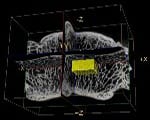The initiative addresses one of the most pressing issues currently facing U.S. Gulf of Mexico fisheries management, as the iconic red snapper supports one of the most economically valuable finfish fisheries in the Gulf.
An expert team of university and government scientists will determine the abundance of red snapper in the U.S. waters of the Gulf of Mexico, as availability of the fish is vital to the region’s economy.
“Red snapper have great economic value to all the gulf states,” said SMU statistician Lynne Stokes, a member of the team. “Maintaining the health of the species is vitally important, so it’s necessary to ensure species are fished at the right level.”
As an expert in surveys, polls and sampling, Stokes’ role in the project is to help design ways to sample the vast expanse of the gulf efficiently so that good estimates of abundance can be produced.
“The gulf is very diverse, and different sampling methods are needed for different habitats, which makes the sample design problem interesting,” said Stokes, a professor in the SMU Department of Statistical Science. “The cheapest way to collect data about the health of a marine fish species is by asking a sample of anglers about their catch. However, if fish are present in places where anglers are not, other methods are needed. There is some uncertainty about all the places red snapper exist in the gulf, so it is not known if catch-based methods provide accurate estimates of abundance.”
The project will obtain angler-independent data about red snapper abundance by sampling their potential habitat, Stokes said. The team will collect data on red snapper numbers by direct observation of a sample of transects on the sea bottom and structures on the sea floor, using remotely controlled video cameras. Stokes will help determine how extensive the observation must be.
The team of scientists was selected by an expert review panel convened by the Mississippi-Alabama Sea Grant Consortium to conduct the independent study.
“American communities across the Gulf of Mexico depend on their access to, as well as the long term sustainability of, red snapper,” said U.S. Secretary of Commerce Wilbur Ross. “I look forward to the insights this project will provide as we study and manage this valuable resource.”
Recreational anglers and commercial fishers will play a key role
The research team, made up of 21 scientists from 12 institutions of higher learning, a state agency and a federal agency, was awarded $9.5 million in federal funds for the project through a competitive research grant process. With matching funds from the universities, the project will total $12 million.
“We’ve assembled some of the best red snapper scientists around for this study,” said Greg Stunz, the project leader and a professor at the Harte Research Institute for Gulf of Mexico Studies at Texas A&M University – Corpus Christi. “The team members assembled through this process are ready to address this challenging research question. There are lots of constituents who want an independent abundance estimate that will be anxiously awaiting our findings.”
Recreational anglers and commercial fishers will be invited to play a key role in collecting data by tagging fish, reporting tags and working directly with scientists onboard their vessels.
“The local knowledge fishermen bring to this process is very valuable and meaningfully informs our study,” Stunz said.
Some stakeholder groups have expressed concerns that there are more red snapper in the Gulf than currently accounted for in the stock assessment. The team of scientists on this project will spend two years studying the issue.
In 2016, Congress directed the National Sea Grant College Program and NOAA Fisheries to fund independent red snapper data collections, surveys and assessments, including the use of tagging and advanced sampling technologies. Sea Grant and NOAA Fisheries worked collaboratively to transfer federal funds to Mississippi-Alabama Sea Grant to administer the competitive research grant process and manage this independent abundance estimate.
“Today’s announcement is welcome news for all red snapper anglers in the Gulf of Mexico,” said Sen. Richard Shelby of Alabama. “As Chairman of the U.S. Senate Appropriations Subcommittee on Commerce, Justice, Science and Related Agencies, I was proud to author and secure federal funding to address the need for better data, which is a fundamental issue plaguing the fishery. The management of red snapper must be grounded in sound science if we want to provide fair access and more days on the water for our anglers. It is my hope that these independent scientists will be able to accurately determine the abundance of red snapper in the Gulf of Mexico once and for all.”
Project team will determine abundance and distribution of red snapper
The research will be driven largely by university-based scientists with partners from state and federal agencies, Stunz said.
The funding will allow the scientists to carry out an abundance estimate using multiple sampling methods with a focus on advanced technologies and tagging for various habitat types, he said.
“I’m pleased to see that the independent estimate is moving forward and including the expertise of recreational fishermen,” said Rep. John Culberson of Texas. “I will continue to work with Texas fishermen and NOAA to address the inadequate access to red snapper.”
The project team will determine abundance and distribution of red snapper on artificial, natural and unknown bottom habitat across the northern Gulf of Mexico.
As a statistician chosen for the team, SMU’s Stokes is also an expert in non-sampling survey errors, such as errors by interviewers and respondents. She recently conducted research on evaluating the accuracy of contest judges and on improving estimates of marine fishery yields by the National Oceanic and Atmospheric Administration.
Stokes also contributes to the National Assessment of Educational Progress, or “Nation’s Report Card,” examining the way schools and students are selected for the large study.
Besides SMU, others on the team include Texas A&M University, University of Florida, University of South Alabama, Louisiana State University, Florida International University, NOAA Fisheries, Auburn University, Mississippi State University, Louisiana Department of Wildlife and Fisheries, College of William and Mary, University of Southern Mississippi, and the University of South Florida. — Mississippi-Alabama Sea Grant and Southern Methodist University











 The research of SMU faculty
The research of SMU faculty 